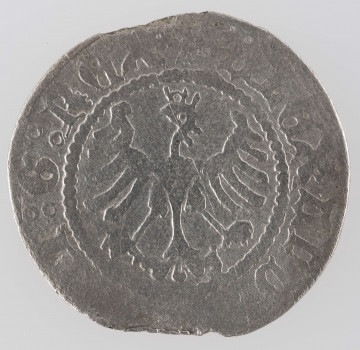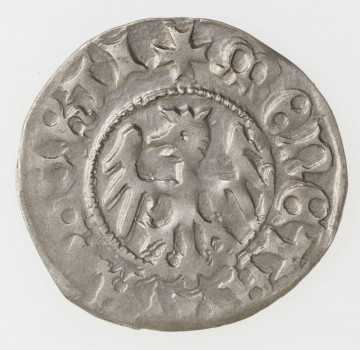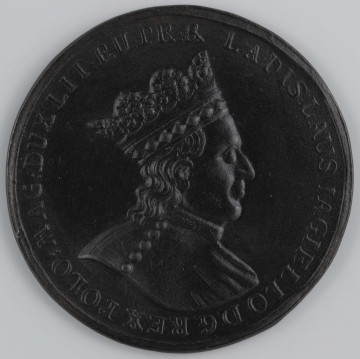
Alexander Jagiellon’s crown half-penny
1502 — 1506
National Museum in Lublin
Part of the collection: Money on Polish territory in the Middle Ages
The beginning of the war with the Teutonic Order forced Casimir Jagiellon to look for financial means to conduct it. One of them was the profit from the issue of coins. Consequently, in 1456 the Crown Mint in Kraków, closed since 1444, was started. Due to a shortage of bullion, initially mainly denars with a low silver content were issued, but as early as in January 1455 at the Sejm in Łęczyca a decision was made to issue ‘półgrosz’, the production of which was suspended during the reign of Władysław Warneńczyk. Its issuing was supposed to ensure exchangeability of poor denars into full-value coins. Despite such an assumption, the value of semi-pros gradually deteriorated. Initially, the mint management was entrusted to Stanisław Morsztyn, who performed this function from 1456 to 1479. Already in 1471, the first devaluation of the half-penny was made. Its weight dropped from 1.58 g to 1.3 g. Another reduction took place during the administration of the Crown Treasurer Piotr from Kurozwięki. From 1479, the weight of the half-penny dropped to 0.92 grams. While maintaining the share of silver at the level of approximately 75 percent, initially 1.184 grams of silver were used to mint the coins, then 0.98 grams, and during the reign of Piotr of Kurozięki, the weight dropped to as little as 0.689 grams of silver. Deterioration of the coin value was accompanied by a decrease in the quality of used mint stamps. The approach to the quantity of issued coins was also changing. In the times of Stanisław Morsztyn, mainly denars were minted, while half-pennies were issued in small quantities. What is more, after the end of the Thirteen Years' War in 1466, the production was temporarily reduced even further, and it is possible that the minting of denars was discontinued. When Piotr from Kurozwęki became the manager of the Kraków mint, the issuing of halfpence increased rapidly and the production of denars was completely abandoned. This administrator introduced the custom, maintained until the 18th century, of signing coins minted in the Royal Mint with the Crown Treasurer's mark. The letter-markings MK, TM and FM, used in the times of Stanisław Morsztyn, the pronunciation of which is not clear, were replaced by a five-pointed rose, referring to the coat of arms of Piotr of Kurozwęki. The relatively high value of half-penny maintained until 1479, and thus encouraged forgeries. As a result, among the surviving pieces from the years 1456-1479, most are forgeries.
Leszek Poniewozik
Author / creator
Dimensions
cały obiekt:
Object type
numismatic
Technique
stamp minting
Material
silver
Creation time / dating
Creation / finding place
Owner
The National Museum in Lublin
Identification number
Location / status

1502 — 1506
National Museum in Lublin

1492 — 1499
National Museum in Lublin

1790 — 1795
National Museum in Lublin
DISCOVER this TOPIC
National Museum in Lublin
DISCOVER this PATH
Educational path